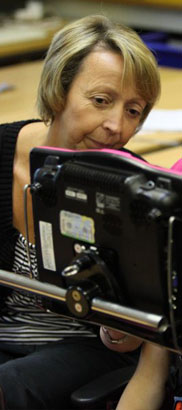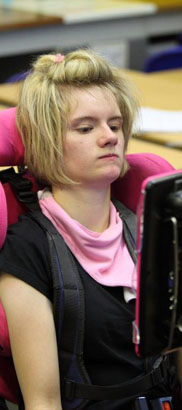For children and young people with CLDD, there
are often high-level health, social and educational needs associated
with their conditions. For some, this requires multiple interventions
from many professionals.
These professionals can unwittingly contribute to an intervention scrum
with the family and child as the ball at its centre.
Brody et al, 2006

Transdisciplinary working at its best is able to take away the elements
of depersonalisation, incompatible targets and impossible scheduling of
appointments with the transdisciplinary team (including the family) prioritising
and rationalising their support for the young person in a way that enhances
their quality of life and that of
their family.
There are many individuals with whom one may collaborate to support a child's engagement. These will include:
- Individuals in the classroom;
- In the home/extended home;
- In the school;
- From other schools;
- From external agencies.
St Nicholas is a community day special school whose children have a wide
range of learning disabilities, including severe learning difficulties,
profound learning difficulties, complex learning difficulties, autism and
sensory impairments.
In 2007, the school developed a transdisciplinary 'shared goals' initiative
so that professionals working with the most complex students, their families
and carers, could work together to create a holistic and supportive approach
to a child's development and learning.
Six planning meetings per child during the year are attended by all involved
to assess, review, plan and adapt approaches.

The key benefits of this approach to children are:
- Interlinking goals from different disciplines with a common aim and clear direction/strategies;
- Transdisciplinary working (therapists get regular information about a child's progress even if they cannot physically be with or work with a child);
- Teaching staff at the school get a clear programme of how best to work with the child to optimise their individual learning and functional skills development;
- A focus on functional skills, 'real skills that matter', that will make an impact on a child's life.
Working Together for Better Outcomes, 2008

For example:
- Key people in the child's school;
- Key family members and friends;
- Key practitioners in health and social care;
- Key personnel in education agencies outside school, voluntary agencies etc.

Boddy, J., Potts, P. and Statham, J. (2006) Models of Good Practice in Joined-up Assessment: Working for Children with 'Significant and Complex Needs'. London: Thomas Coram Research Unit, University of London.